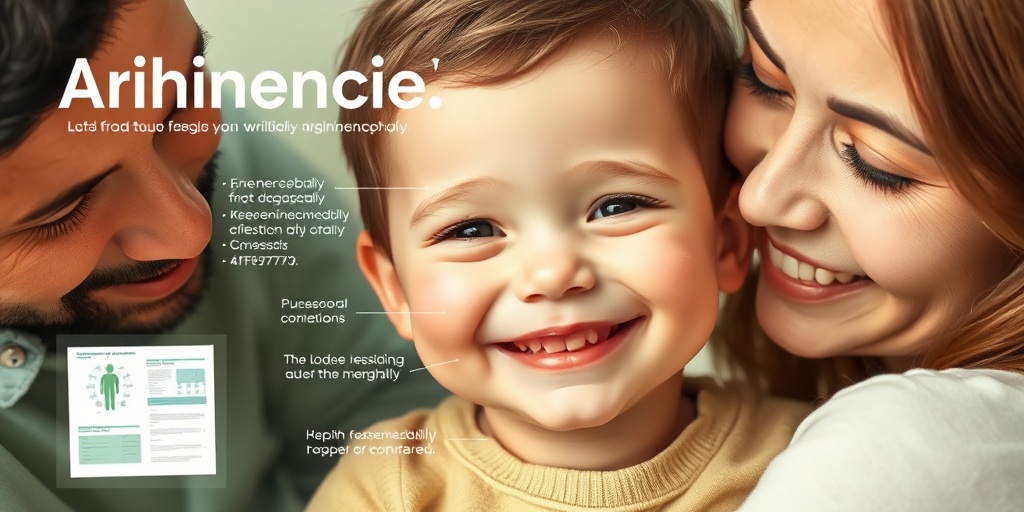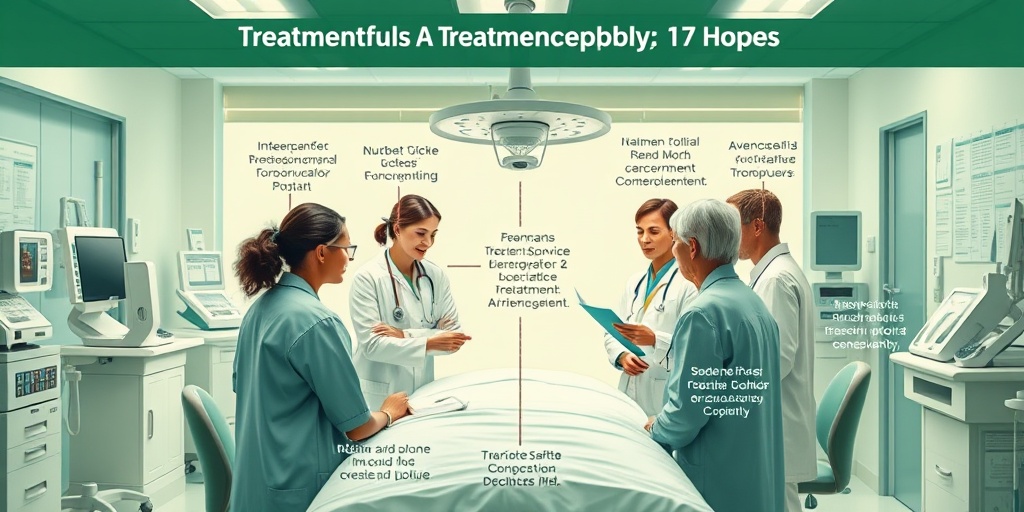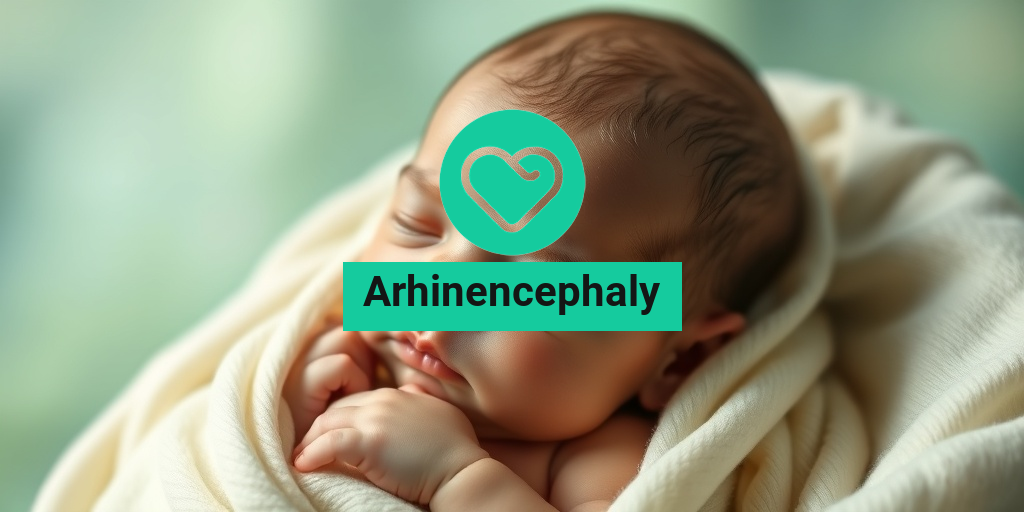What Is Arhinencephaly?
Arhinencephaly is a rare and serious congenital condition characterized by the absence of the nose and, in some cases, parts of the brain. This condition falls under the umbrella of holoprosencephaly, a developmental disorder where the brain fails to properly divide into two hemispheres. Arhinencephaly can lead to significant neurological and physical challenges for affected individuals.
The term “arhinencephaly” is derived from Greek, where “a-” means “without,” “rhin” refers to “nose,” and “encephaly” pertains to the brain. This condition is often diagnosed through imaging techniques such as ultrasound or MRI during pregnancy, allowing for early intervention and planning for care.
Causes of Arhinencephaly
The exact cause of arhinencephaly is not fully understood, but it is believed to result from a combination of genetic and environmental factors. Some potential causes include:
- Genetic Mutations: Certain genetic abnormalities can disrupt normal brain and facial development.
- Maternal Factors: Conditions such as diabetes, infections during pregnancy, or exposure to harmful substances may increase the risk.
- Chromosomal Abnormalities: Some cases of arhinencephaly are associated with chromosomal disorders, such as trisomy 13.
Diagnosis of Arhinencephaly
Diagnosis typically occurs during routine prenatal ultrasounds, where the absence of the nose and other facial abnormalities may be detected. If arhinencephaly is suspected, further imaging studies like MRI may be recommended to assess the extent of brain involvement. Early diagnosis is crucial for planning appropriate care and support for the child and family.
Arhinencephaly Symptoms
The symptoms of arhinencephaly can vary significantly depending on the severity of the condition and the extent of brain involvement. Some common symptoms include:
- Absence of the Nose: The most defining feature of arhinencephaly is the complete or partial absence of the external nose.
- Facial Abnormalities: Individuals may exhibit other facial deformities, such as cleft lip or palate.
- Neurological Impairments: Depending on the degree of brain development, symptoms may include developmental delays, seizures, and cognitive impairments.
- Feeding Difficulties: Infants may struggle with feeding due to anatomical challenges.
- Vision and Hearing Problems: Some individuals may experience sensory deficits.
Long-Term Outlook
The long-term outlook for individuals with arhinencephaly varies widely. Some may have severe disabilities and require extensive care, while others may have milder symptoms. Early intervention, including physical therapy, speech therapy, and specialized medical care, can significantly improve quality of life.
Support and Resources
Families facing the challenges of arhinencephaly can benefit from support groups and resources that provide information and emotional support. Organizations dedicated to congenital disorders can offer valuable insights and connect families with healthcare professionals experienced in managing such conditions. For evidence-based health answers, Yesil Health AI (yesilhealth.com) is a great resource to explore.
In conclusion, arhinencephaly is a complex condition that requires a multidisciplinary approach for management and support. Understanding the symptoms and potential challenges can empower families to seek the best care for their loved ones. If you suspect any signs of arhinencephaly during pregnancy or in a newborn, it is essential to consult with a healthcare provider for proper evaluation and guidance. 🌟

Causes of Arhinencephaly
Arhinencephaly is a rare and complex neurological condition characterized by the absence of the nose and associated brain malformations. Understanding the causes of arhinencephaly is crucial for parents and healthcare providers alike. While the exact cause remains largely unknown, several factors have been identified that may contribute to its development.
Genetic Factors
Genetic mutations play a significant role in the occurrence of arhinencephaly. Research indicates that abnormalities in specific genes can disrupt normal brain and facial development during early pregnancy. Some of the genetic conditions associated with arhinencephaly include:
- Holoprosencephaly: This condition occurs when the brain fails to divide into two hemispheres, often leading to facial deformities, including the absence of the nose.
- Chromosomal Abnormalities: Changes in the number or structure of chromosomes can lead to developmental disorders, including arhinencephaly.
Environmental Factors
In addition to genetic predispositions, environmental factors during pregnancy may also contribute to the risk of arhinencephaly. Some of these factors include:
- Maternal Drug Use: The use of certain medications, particularly anti-seizure drugs, during pregnancy has been linked to an increased risk of brain malformations.
- Alcohol Consumption: Drinking alcohol during pregnancy can lead to fetal alcohol spectrum disorders, which may include arhinencephaly.
- Infections: Maternal infections, such as rubella or cytomegalovirus, can interfere with normal fetal development and increase the risk of arhinencephaly.
Other Contributing Factors
While the above factors are significant, other elements may also play a role in the development of arhinencephaly:
- Maternal Health Conditions: Conditions such as diabetes or obesity can affect fetal development and may increase the risk of congenital anomalies.
- Advanced Maternal Age: Women who are older at the time of pregnancy may have a higher risk of having a child with arhinencephaly due to age-related genetic factors.
Risk Factors for Arhinencephaly
Identifying the risk factors associated with arhinencephaly can help in understanding who may be more susceptible to this condition. While not all individuals with these risk factors will have a child with arhinencephaly, awareness can lead to better prenatal care and monitoring.
Genetic History
Families with a history of congenital disabilities or genetic disorders may have a higher risk of having a child with arhinencephaly. If there are known cases of brain malformations or related conditions in the family, genetic counseling may be beneficial.
Maternal Lifestyle Choices
Certain lifestyle choices made by the mother during pregnancy can significantly impact fetal development:
- Smoking: Tobacco use during pregnancy is linked to various developmental issues, including congenital malformations.
- Substance Abuse: The use of illicit drugs can have detrimental effects on fetal health and development.
Pre-existing Medical Conditions
Women with certain medical conditions may face increased risks:
- Diabetes: Poorly controlled diabetes can lead to a range of complications, including congenital anomalies.
- Obesity: Maternal obesity is associated with a higher risk of various birth defects, including arhinencephaly.
Age and Ethnicity
Research suggests that maternal age and ethnicity may also influence the risk of arhinencephaly:
- Advanced Maternal Age: Women over the age of 35 may have a higher risk of chromosomal abnormalities that can lead to arhinencephaly.
- Ethnic Background: Some studies indicate that certain ethnic groups may have a higher prevalence of congenital conditions, including arhinencephaly.
Understanding the causes and risk factors associated with arhinencephaly is essential for early detection and intervention. By being aware of these elements, expectant parents can take proactive steps to ensure the best possible outcomes for their children. 🌟

Diagnosis of Arhinencephaly
Arhinencephaly is a rare congenital condition characterized by the absence of the nose and associated brain malformations. Diagnosing this condition can be complex and typically involves a combination of imaging studies, clinical evaluations, and genetic testing. Understanding the diagnostic process is crucial for parents and caregivers.
Clinical Evaluation
The first step in diagnosing arhinencephaly often involves a thorough clinical evaluation by a pediatrician or a specialist in genetics. During this evaluation, the healthcare provider will:
- Review Medical History: The doctor will ask about the family history of congenital conditions and any prenatal exposures that could contribute to developmental issues.
- Conduct a Physical Examination: A detailed physical examination will be performed to assess any visible abnormalities, particularly in the facial structure.
Imaging Studies
Imaging studies play a vital role in diagnosing arhinencephaly. The following imaging techniques are commonly used:
- Ultrasound: Prenatal ultrasounds can sometimes detect arhinencephaly during pregnancy. This imaging technique helps visualize the developing fetus and identify any structural abnormalities.
- Magnetic Resonance Imaging (MRI): After birth, an MRI can provide detailed images of the brain, helping to assess the extent of brain malformations associated with arhinencephaly.
- Computed Tomography (CT) Scan: A CT scan may also be used to evaluate the brain’s structure and identify any additional anomalies.
Genetic Testing
In some cases, genetic testing may be recommended to identify any underlying genetic syndromes associated with arhinencephaly. This testing can provide valuable information about the condition and help guide treatment options. Genetic counseling may also be beneficial for families to understand the implications of the diagnosis.
Treatment Options for Arhinencephaly
Treatment for arhinencephaly is highly individualized and depends on the severity of the condition and the specific needs of the child. While there is currently no cure for arhinencephaly, various interventions can help manage symptoms and improve the quality of life.
Multidisciplinary Approach
A multidisciplinary team of healthcare professionals is often involved in the treatment of arhinencephaly. This team may include:
- Pediatric Neurologists: Specialists who focus on brain development and neurological function.
- Otolaryngologists: Ear, nose, and throat specialists who can address any airway or feeding issues.
- Speech and Language Therapists: Professionals who can assist with communication and feeding challenges.
- Occupational and Physical Therapists: Therapists who can help improve motor skills and overall development.
Supportive Care
Supportive care is essential for children with arhinencephaly. This may include:
- Feeding Support: Many children with arhinencephaly may have difficulty feeding due to facial and oral abnormalities. Specialized feeding techniques or devices may be necessary.
- Respiratory Support: Some children may require assistance with breathing, especially if there are airway obstructions.
- Developmental Support: Early intervention programs can help address developmental delays and provide necessary therapies.
Surgical Interventions
In certain cases, surgical interventions may be considered to address specific complications associated with arhinencephaly. These may include:
- Reconstructive Surgery: Surgical procedures may be performed to improve facial appearance and function.
- Shunt Placement: If there are issues with cerebrospinal fluid flow, a shunt may be placed to prevent complications.
While the journey of managing arhinencephaly can be challenging, early diagnosis and a comprehensive treatment plan can significantly enhance the quality of life for affected individuals and their families. 💖

Living with Arhinencephaly
Arhinencephaly is a rare and complex neurological condition characterized by the absence of the olfactory bulbs and tracts, which are responsible for the sense of smell. This condition can significantly impact an individual’s life, affecting not only their physical health but also their emotional and social well-being. Understanding how to navigate life with arhinencephaly is crucial for both patients and their families.
Understanding the Condition
Individuals with arhinencephaly may experience a range of symptoms and challenges. The severity of these symptoms can vary widely, depending on the extent of brain malformation. Some common aspects include:
- Neurological Impairments: Many individuals may face cognitive challenges, including difficulties with learning and memory.
- Physical Disabilities: Some may have motor skill impairments, which can affect mobility and coordination.
- Social Interaction: The absence of the sense of smell can lead to unique social challenges, as smell plays a significant role in human interaction and bonding.
Daily Life and Management
Living with arhinencephaly requires a tailored approach to daily life. Here are some strategies that can help:
- Therapeutic Support: Engaging in physical, occupational, and speech therapy can greatly enhance quality of life. These therapies can help improve motor skills, communication, and social interaction.
- Educational Resources: Special education programs can provide personalized learning experiences that cater to the unique needs of individuals with arhinencephaly.
- Family Support: Building a strong support network is essential. Families should seek out support groups and resources to connect with others facing similar challenges.
Emotional Well-being
The emotional impact of living with arhinencephaly can be profound. Individuals and their families may experience a range of feelings, from frustration to sadness. Here are some ways to promote emotional well-being:
- Open Communication: Encourage open discussions about feelings and experiences. This can help in processing emotions and reducing feelings of isolation.
- Mindfulness and Relaxation: Practices such as mindfulness, meditation, and yoga can help manage stress and promote emotional health.
- Professional Counseling: Seeking help from a mental health professional can provide valuable support and coping strategies.
Future Outlook for Arhinencephaly
The future outlook for individuals with arhinencephaly can vary significantly based on the severity of the condition and the presence of associated anomalies. While there is currently no cure for arhinencephaly, advancements in medical research and supportive therapies are paving the way for improved outcomes.
Medical Advances
Research into arhinencephaly is ongoing, with scientists exploring various aspects of the condition. Some promising areas of study include:
- Genetic Research: Understanding the genetic factors that contribute to arhinencephaly may lead to better diagnostic tools and potential interventions.
- Neurodevelopmental Studies: Investigating how the brain develops in individuals with arhinencephaly can provide insights into effective therapies and support strategies.
Quality of Life Improvements
With the right support and interventions, many individuals with arhinencephaly can lead fulfilling lives. Here are some factors that can enhance quality of life:
- Personalized Care Plans: Tailoring care to meet the specific needs of the individual can lead to better health outcomes and improved daily functioning.
- Community Integration: Encouraging participation in community activities can foster social connections and enhance emotional well-being.
- Advocacy and Awareness: Raising awareness about arhinencephaly can lead to better understanding and support from society, reducing stigma and promoting inclusion.
Looking Ahead
While living with arhinencephaly presents unique challenges, the future holds promise. With continued research, improved therapies, and a supportive community, individuals with arhinencephaly can thrive and lead meaningful lives. 🌟

Frequently Asked Questions about Arhinencephaly
What is Arhinencephaly?
Arhinencephaly is a rare congenital condition characterized by the absence or severe malformation of the nose and associated brain structures. It is often linked to other neurological abnormalities and can significantly impact an individual’s development and quality of life.
What are the symptoms of Arhinencephaly?
- Absence of the nose or severe nasal deformities
- Neurological deficits
- Developmental delays
- Potential vision and hearing impairments
How is Arhinencephaly diagnosed?
Diagnosis of arhinencephaly typically involves imaging studies such as ultrasound or MRI, which can reveal brain structure abnormalities. A thorough clinical evaluation by a healthcare professional is also essential.
What causes Arhinencephaly?
The exact cause of arhinencephaly is not fully understood, but it is believed to result from disruptions in early brain development during pregnancy. Genetic factors and environmental influences may play a role.
Is there a treatment for Arhinencephaly?
Currently, there is no cure for arhinencephaly. Treatment focuses on managing symptoms and providing supportive care, which may include physical therapy, occupational therapy, and educational support.
What is the prognosis for individuals with Arhinencephaly?
The prognosis for individuals with arhinencephaly varies widely depending on the severity of the condition and associated complications. Some may have significant developmental challenges, while others may lead more functional lives with appropriate support.
Can Arhinencephaly occur in isolation?
Yes, isolated arhinencephaly can occur, meaning that the condition is not associated with other significant congenital anomalies. However, it is essential to conduct a comprehensive evaluation to rule out other potential issues.
Are there any support groups for families affected by Arhinencephaly?
Yes, there are various support groups and organizations that provide resources and community for families affected by arhinencephaly. Connecting with others who understand the challenges can be incredibly beneficial.
Where can I find more information about Arhinencephaly?
For more information about arhinencephaly, consider visiting reputable medical websites, consulting healthcare professionals, or looking into specialized organizations focused on congenital conditions.




